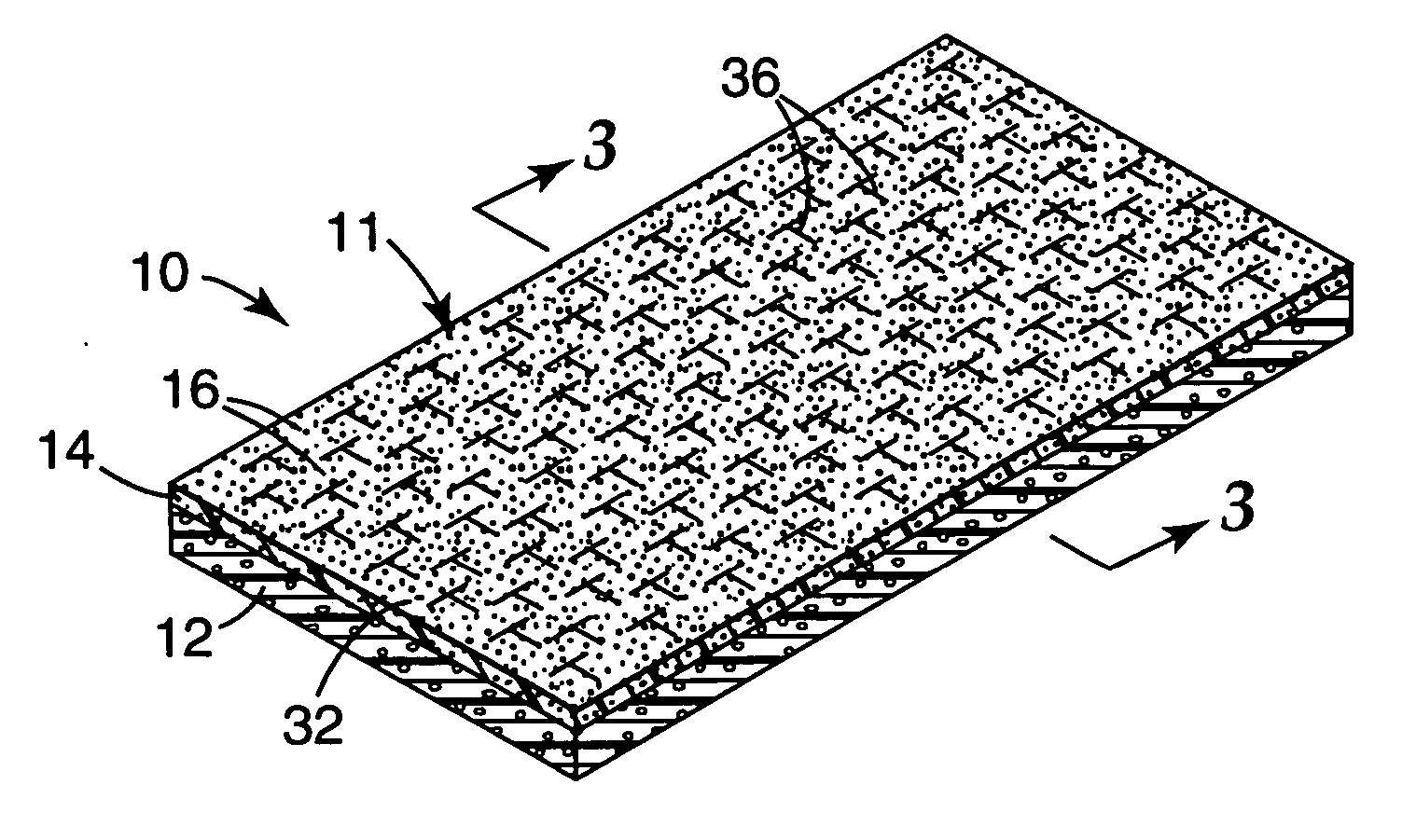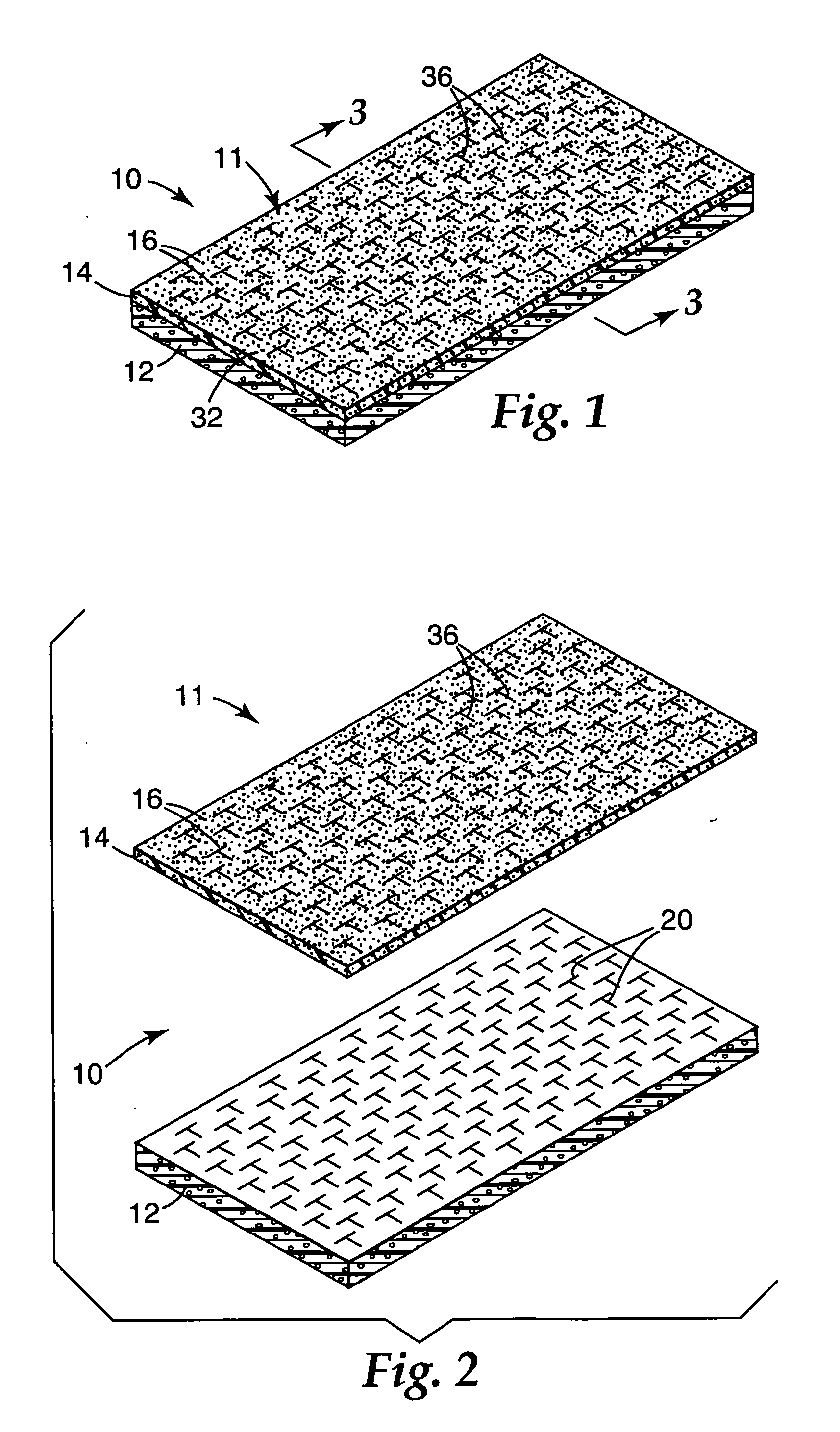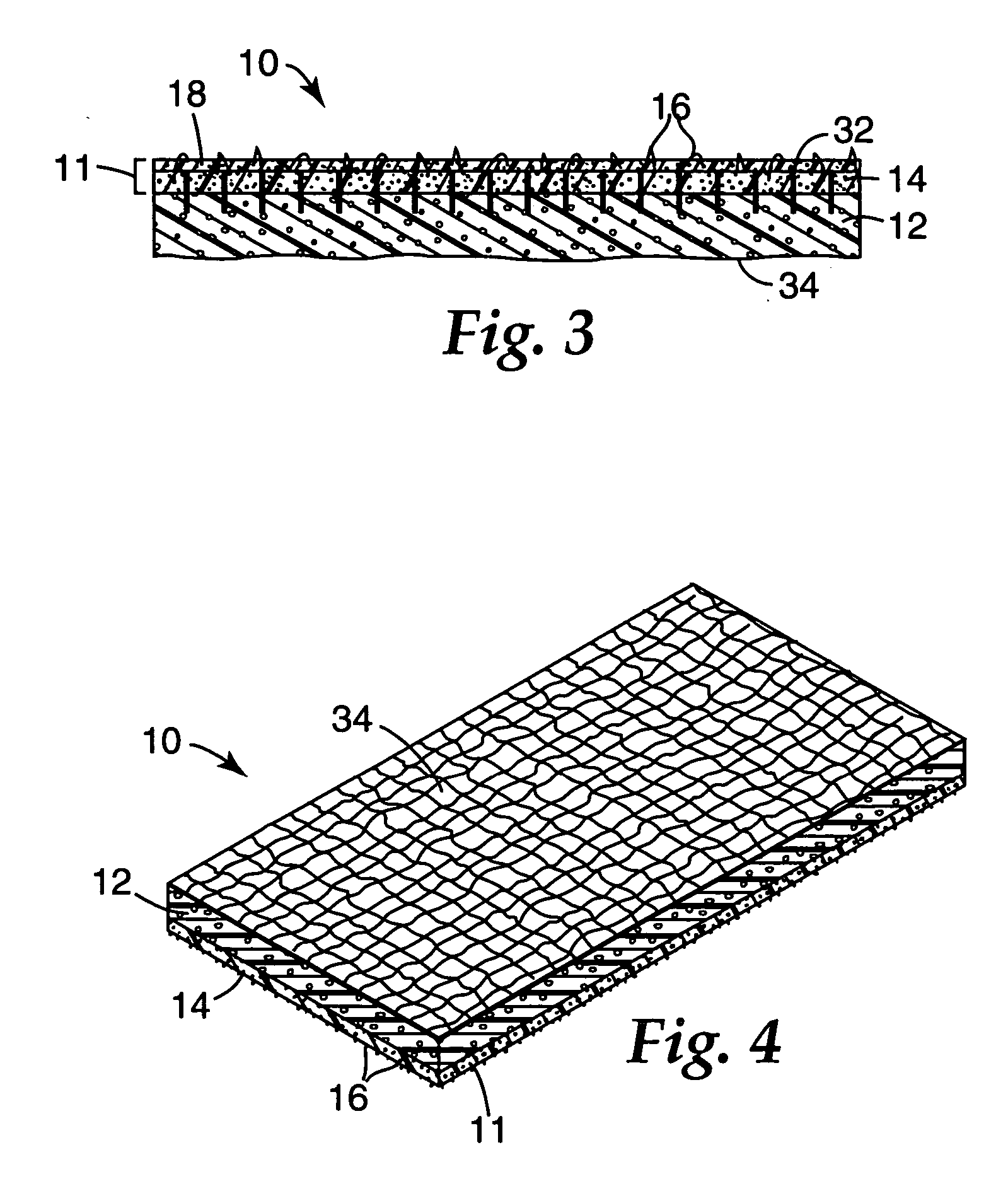Flexible abrasive article and method of making
a flexible, abrasive technology, applied in the field of abrasive articles, can solve the problems of affecting the quality of abrasive materials, and abrasive materials, and achieve the effects of improving flexibility, reducing scratching, and improving cutting
- Summary
- Abstract
- Description
- Claims
- Application Information
AI Technical Summary
Benefits of technology
Problems solved by technology
Method used
Image
Examples
example
[0063] An abrasive article was made according to the general method described above using a 900DZ-REG cloth abrasive sheet. The back side of the abrasive sheet was coated with a hot melt pressure-sensitive adhesive. Biaxially oriented slits were then laser cut into the abrasive sheet from the back side of the sheet. The slits were cut to the pattern shown in FIG. 1. The slit abrasive sheet was then adhesively bonded to a foam backup pad. The backup pad was a Volextra rubberized polyethylene closed-cell foam pad having a thickness of approximately ⅛ of an inch.
[0064] Persons of ordinary skill in the art may appreciate that various changes and modifications may be made to the invention described above without deviating from the inventive concept. For example, the slits may be provided in the form of straight lines as shown in FIGS. 7b-7g, or the slits may be curved, have a serrated, wavy or serpentine shape, or be provided in other shapes and patterns. Thus, the scope of the present ...
PUM
 Login to View More
Login to View More Abstract
Description
Claims
Application Information
 Login to View More
Login to View More - R&D
- Intellectual Property
- Life Sciences
- Materials
- Tech Scout
- Unparalleled Data Quality
- Higher Quality Content
- 60% Fewer Hallucinations
Browse by: Latest US Patents, China's latest patents, Technical Efficacy Thesaurus, Application Domain, Technology Topic, Popular Technical Reports.
© 2025 PatSnap. All rights reserved.Legal|Privacy policy|Modern Slavery Act Transparency Statement|Sitemap|About US| Contact US: help@patsnap.com



